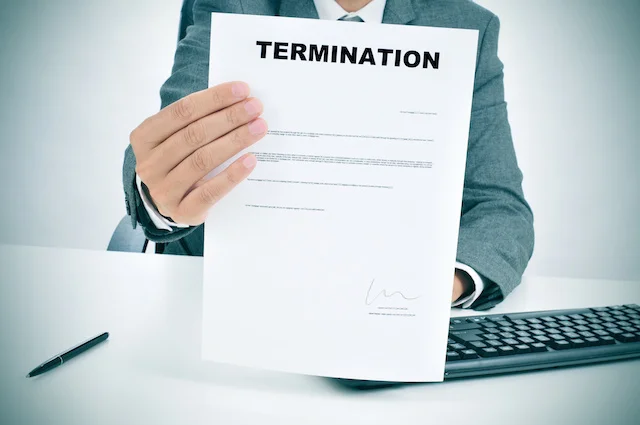If you’ve been fired under circumstances that feel discriminatory, retaliatory, or otherwise unlawful, you may be considering a wrongful termination claim. But many employees hesitate because they don’t know what the process involves or what to expect.
In Washington, D.C., several legal protections exist for workers who have been wrongfully terminated. This guide will walk you through the key steps, timelines, and considerations when pursuing a wrongful termination claim in the District of Columbia—so you can move forward informed and prepared.
Step 1: Determine If You Have a Valid Claim
Not every firing is legally “wrongful,” even if it seems unfair. Most employment in D.C. is at-will, which means your employer can terminate you for almost any reason—or no reason at all—unless the reason violates a specific law.
You may have a valid wrongful termination claim if you were fired for:
- Discrimination based on race, gender, age, religion, disability, sexual orientation, etc.
- Retaliation after reporting harassment, discrimination, wage violations, or unsafe working conditions
- Taking protected leave (such as under the Family and Medical Leave Act)
- Refusing to engage in illegal activities
- Whistleblowing on misconduct or fraud
- Violating an employment contract’s terms
If you’re unsure whether your situation qualifies, consulting with an employment attorney early on can clarify your legal options.
Step 2: Gather and Preserve Evidence
Before filing any complaint, it’s crucial to document everything related to your termination. Useful evidence might include:
- Emails or messages showing discriminatory or retaliatory intent
- Performance reviews (especially positive ones before a sudden firing)
- HR complaints you filed
- Witness names or statements
- Termination notices or exit paperwork
- Your employment contract or employee handbook
The more documentation you have, the stronger your claim will be. Keep copies in a safe place and do not rely solely on access to work systems that may be shut off after your termination.
Step 3: Decide Where to File Your Claim
Depending on the nature of your termination, you may file a complaint with one or more agencies. Common options include:
1. The Equal Employment Opportunity Commission (EEOC)
If your claim involves federal civil rights violations (like race or gender discrimination), you must typically file with the EEOC first. You generally have 180 days from the date of termination to file (or 300 days if state/local laws also apply, which they do in D.C.).
2. The D.C. Office of Human Rights (OHR)
For violations under the D.C. Human Rights Act, you may file with the OHR. This law protects against a broader range of discrimination and retaliation and allows 1 year to file a complaint.
3. The U.S. Department of Labor (DOL)
If your case involves wage issues, retaliation under the FMLA, or whistleblower protections under federal labor laws, you may need to file with the DOL.
4. Civil Court
In some situations—especially contract violations or after exhausting administrative remedies—you may proceed directly to civil court. Your attorney can help you determine the best route.
Step 4: Participate in the Investigation or Mediation Process
After filing, your claim will typically be:
- Reviewed for jurisdiction and merit
- Investigated, with both you and your employer given the opportunity to present evidence
- Considered for mediation or settlement, if both parties are willing
In many cases, wrongful termination disputes settle during this phase. A settlement may include back pay, emotional distress damages, or other compensation—without the need for a trial.
If no settlement is reached, and the agency finds probable cause, they may issue a “right to sue” letter, allowing you to take your case to court.
Step 5: Filing a Lawsuit
If you move forward with a lawsuit, expect a more formal process that includes:
- Filing a complaint in court
- Discovery, where both sides exchange evidence
- Depositions, where you and witnesses may be questioned under oath
- Motions (such as motions to dismiss or for summary judgment)
- Trial, if the case is not resolved earlier
Lawsuits can take months or even years, depending on complexity, scheduling, and whether appeals are filed.
Remedies You May Recover
If your claim is successful—either through settlement or court judgment—you may be entitled to:
- Back pay (lost wages and benefits)
- Front pay (future lost income if reinstatement isn’t feasible)
- Emotional distress damages
- Punitive damages, if your employer acted maliciously or recklessly
- Attorneys’ fees and costs
Your compensation depends on the strength of your case, the type of claim, and whether you file under federal or local law.
Final Thoughts
Filing a wrongful termination claim in D.C. can be a complex process, but it’s often the first step toward justice and recovery. While many cases settle before trial, a thorough understanding of your rights—and a strategic approach to documenting and presenting your claim—will put you in the best position to succeed.
If you believe you were wrongfully terminated, don’t wait. Time limits apply, and early action is critical. A knowledgeable employment attorney can help you understand your options and guide you every step of the way. We recommend wrongful termination attorney dc.


Comments are closed.